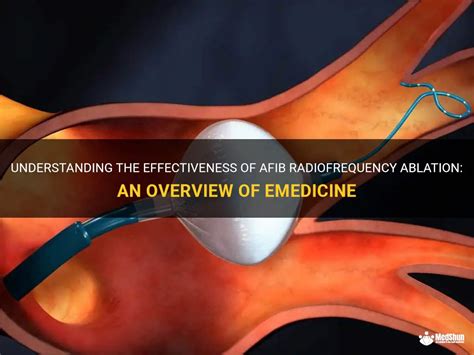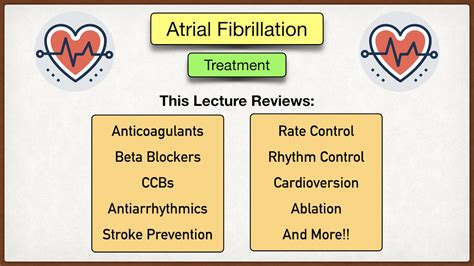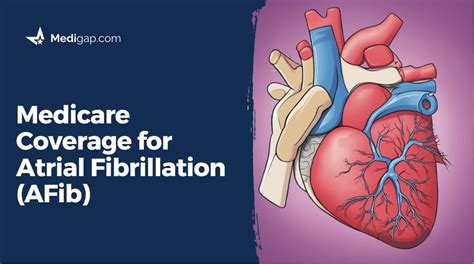Intro
Atrial fibrillation, commonly referred to as Afib, is a type of irregular heartbeat that can lead to various complications, including stroke, heart failure, and other heart-related problems. The condition is characterized by an abnormal heart rhythm, where the upper chambers of the heart beat too quickly and irregularly, preventing the heart from pumping blood effectively. One of the most effective treatments for Afib is ablation, a minimally invasive procedure that aims to restore a regular heart rhythm.
Afib is a significant health concern, affecting millions of people worldwide. The condition can be caused by various factors, including high blood pressure, heart disease, and thyroid problems. Symptoms of Afib may include palpitations, shortness of breath, and fatigue. If left untreated, Afib can lead to serious complications, making it essential to seek medical attention if symptoms persist. Ablation for Afib treatment has become a popular option due to its high success rate and minimal risks.
The importance of treating Afib cannot be overstated. The condition can significantly impact a person's quality of life, making everyday activities challenging. Furthermore, Afib increases the risk of stroke, heart failure, and other heart-related problems. Ablation for Afib treatment offers a solution to these problems, providing a minimally invasive and effective way to restore a regular heart rhythm. By understanding the benefits and risks of ablation, individuals with Afib can make informed decisions about their treatment options.
Ablation For Afib Treatment Overview

Types Of Ablation For Afib Treatment
There are several types of ablation for Afib treatment, including radiofrequency ablation, cryoablation, and laser ablation. Radiofrequency ablation is the most common type of ablation, using high-frequency energy to heat and destroy the abnormal electrical pathways. Cryoablation, on the other hand, uses extreme cold to freeze and destroy the abnormal pathways. Laser ablation uses high-energy light to destroy the abnormal pathways. Each type of ablation has its advantages and disadvantages, and the choice of procedure depends on the individual's specific condition and medical history.Benefits Of Ablation For Afib Treatment

Risks And Complications Of Ablation For Afib Treatment
While ablation for Afib treatment is generally safe, there are some risks and complications associated with the procedure. These may include bleeding, infection, and damage to the heart or surrounding tissues. In rare cases, the procedure may cause a stroke or heart attack. However, these risks are minimal, and the benefits of the procedure far outweigh the risks. It is essential to discuss the potential risks and complications with a doctor before undergoing the procedure.Preparing For Ablation For Afib Treatment

What To Expect During And After The Procedure
During the procedure, the individual will be under general anesthesia or conscious sedation, and the doctor will insert a catheter through a vein in the leg and guide it to the heart using imaging technology. After the procedure, the individual will be taken to a recovery room, where they will be monitored for several hours. The doctor will provide instructions on how to care for the incision site, manage pain, and follow up with appointments.Recovery And Follow-Up Care

Long-Term Results And Outcomes
The long-term results and outcomes of ablation for Afib treatment are generally positive. Studies have shown that the procedure can significantly reduce the symptoms of Afib, including palpitations, shortness of breath, and fatigue. Additionally, the procedure can reduce the risk of stroke, heart failure, and other heart-related problems. However, it is essential to continue follow-up care and monitoring to ensure the best possible outcomes.Ablation For Afib Treatment And Medications

Alternative Treatments For Afib
There are alternative treatments for Afib, including medications, pacemakers, and lifestyle changes. Medications can be used to control the heart rate, prevent blood clots, and reduce the risk of stroke. Pacemakers can be used to regulate the heart rhythm, and lifestyle changes, such as a healthy diet and regular exercise, can help manage the condition. However, ablation for Afib treatment is generally considered the most effective treatment option.Cost And Insurance Coverage For Ablation For Afib Treatment

Conclusion And Final Thoughts
Ablation for Afib treatment is a highly effective and minimally invasive procedure that can significantly improve the quality of life for individuals with Afib. The procedure offers several benefits, including a high success rate, minimal risks, and improved quality of life. While there are some risks and complications associated with the procedure, the benefits far outweigh the risks. It is essential to discuss the potential risks and complications with a doctor before undergoing the procedure.What is ablation for Afib treatment?
+Ablation for Afib treatment is a minimally invasive procedure that uses energy to destroy the abnormal electrical pathways in the heart that cause the irregular heartbeat.
What are the benefits of ablation for Afib treatment?
+The benefits of ablation for Afib treatment include a high success rate, minimal risks, and improved quality of life. The procedure can significantly reduce the symptoms of Afib, including palpitations, shortness of breath, and fatigue.
What are the risks and complications of ablation for Afib treatment?
+The risks and complications of ablation for Afib treatment include bleeding, infection, and damage to the heart or surrounding tissues. In rare cases, the procedure may cause a stroke or heart attack.
We hope this article has provided you with a comprehensive understanding of ablation for Afib treatment. If you have any further questions or concerns, please do not hesitate to comment below. Additionally, if you found this article informative, please share it with others who may benefit from this information. Remember, it is essential to consult with a doctor before undergoing any medical procedure, including ablation for Afib treatment.
